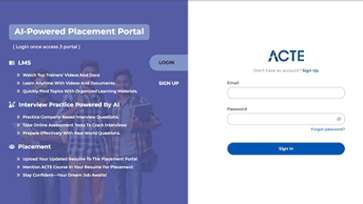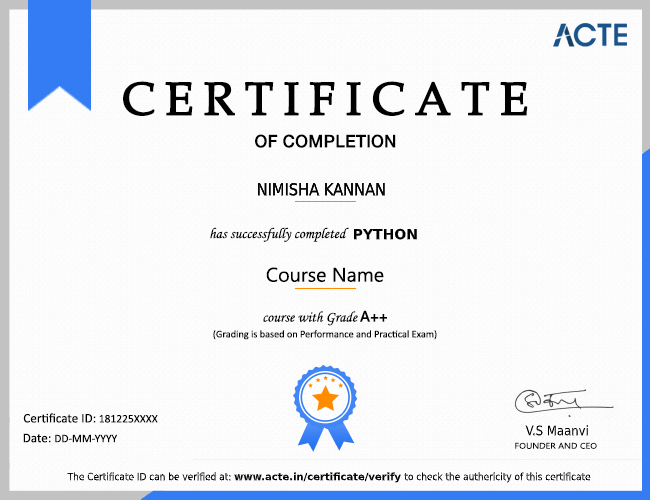Business analytics in Visakhapatnam is a step-by-step process of transforming data into insights using statistical methods to help businesses make decisions.It is a methodical examination of an organization's data with the goal of maximising the power of analytics in business. It is a process that assists businesses in identifying flaws in existing processes and highlighting meaningful data in order to meet the ever-increasing business challenges.With real-time analysis, business analytics plays a significant role in business decision making.
These days, senior management thrives on data-driven decision making that has a greater impact on the product as well as its marketing.The market has a consistent and high demand for business analysts, and the Indian job market has a significant role to play in revolutionising the business analytics job market. Over 1.2 million new jobs are expected to be created in industries such as IT & ITES, retail, banking, healthcare, ecommerce, hospitality, and manufacturing, to name a few.
Additional Info
Introduction:
Data is used in business analytics in Visakhapatnam to create mathematical models that assist organisations in making decisions that add value or are in their best interests. There is a lot of data available for organisations to use, but what data they choose and why they use it will vary by industry.Data is such an important tool for organisations because it is objective and based on facts.
This objectivity can be especially useful for organisations in determining which decisions to make in order to create the most value for themselves.It's also important to understand that data analytics and business analytics are essentially the same thing. However, data analytics focuses on analysing data and making predictions, whereas business analytics focuses on making decisions based on that data and predictions.
Key Highlights:
- Understand the entire business analytics process, from data collection to data extraction, analysis, modelling, and presentation of results.
- SQL is used to extract and manipulate data from large databases.
- Identify and apply statistical models commonly used in descriptive analytics implementation.
- Learn how to build models based on regression, simulation, and data mining using Excel-based tools.
- Learn how to build models for linear programming, integer programming, and simulation-optimization methods using Excel-based tools.
- Capstone Project involving financial loans to aid an investment firm's investment decisions.
Career path of Business Analytics Cousre:
- A Business Systems Analyst can advance to senior analyst, technology architect, or enterprise architect.
- You can advance from Project Manager to Senior Project Manager, Program Manager, Business Owner, and so on.
- One path is not always preferable to another. You have a number of different options to consider.
- To continue with the train analogy, you must purchase a ticket in order to travel to each stop and transfer between stations.
- Each of those tickets will necessitate the development of distinct skills.
- As I previously stated, in order to advance from a senior business analyst to a business architect, you must shift from tactical to strategic thinking, from inward to outward focus, and have a holistic view of the organisation.
- To advance from business analyst in Visakhapatnam to product owner, you must develop new leadership skills, have a strong customer focus, and decision-making authority.
- As you advance in your career, you will need to think outside the project box and more holistically in order to add more value to your organisation.
Advantages:
- Keeping you within your budget.
- If you're like most small businesses, you have a limited marketing budget.
- Using business analytics allows you to make the most of every dollar by getting to know your customers better, anticipating their ever-changing needs, gaining a competitive advantage, and bringing innovative ideas and products to market.
- Improved decision-making.
- Data is used in business analytics to inform decisions and improve accuracy, efficiency, and response time.
- The ability to compare one's achievements to one's overall goals.
- Business analytics in Visakhapatnam helps you see your goals and objectives more clearly.
- Businesses can track their current and historical performance against key performance indicators (KPIs), goals, and objectives by using data visualisation.
- Keeping up with the times.
- Analytics can be used by business owners and marketers to track trends, customer behaviour, and market shifts.
- This information will allow you to stay on top of things and make changes on the fly when and if supporting data indicates it's time.
- Increasing efficiency.
- Nowadays, the speed with which businesses can gather data is incredible.
- You can identify any breakdown in process or performance using business analytics in almost real-time, saving time, money, and resources.
Roles and Responsibilities:
1. Recognize the Needs of the Businesses:
- The Business Analyst's primary responsibility is to collaborate with project stakeholders to understand their requirements and translate them into details that developers can understand. Furthermore, to translate emerging questions from developers into details that stakeholders can understand.
- The ability of the Business Analyst to refine the varying messages as well as the requirements of the project stakeholders or consumers into a consistent, single vision is the key skill required for this portion of the process. This task occasionally entails political and negotiating manoeuvring.
2. The System's Possibilities:
- At the start of the project, the role of a Business Analyst may appear to be one of the software development team members assigned to the project. They must, however, collaborate with key project consumers or stakeholders, as well as business people, to communicate and formulate the business vision for the project.
- Furthermore, the BA must map out the project's scope and initial requirements. The primary goal of the BA is to get the project focused early on by transforming the initial high-level goal into something more realistic.
3. Public Speaking & Presentation:
- It is critical in business to value the creation and delivery of quality presentations on topics such as project status, application designs, and business requirements. People listening to the Business Analyst's presentation are typically senior business and IT management personnel.
- The primary responsibility of the Business Analyst is to impress the stakeholders and other authorities with their presentation, which will have a significant impact on the business's growth.
4. Describe the Project in Detail:
- The Business Analyst in Visakhapatnam primary responsibility is to elaborate on the details. This is where he evaluates the needs and ensures the implementation team has all of the information needed to create or implement the process.
- This phase will most likely include working with a diverse range of stakeholders or consumers across the company to ensure their needs and knowledge are combined into a detailed conversation about what they will actually build.
- This phase is integrated with the beginning of the project in a traditional or waterfall business environment, and it covers the decision of whether to fund the project or not. In many cases, this phrase has come later, after the stakeholder's time and trust has been absorbed.
- BA may also require a data model or specification, depending on the project. Regardless of how BA mentions it, this phase must be completed when the stakeholder or customer has signed off on the agreement of what will be implemented and the developers are aware of what they have to design and implement the project.
5. Assist with Project Implementation:
- Business Analysts are involved in implementation support from start to finish. Unless they have additional roles on the designated project, business analysts are generally not directly involved in implementation.
- They are, however, naturally brought in if problems arise during implementation, resulting in new additional needs to be addressed. This assistance could include facilitating a problem-solving meeting to determine how certain business requirements can be met in the face of newly identified technological constraints.
- Today, many businesses approach this project phase iteratively. That is, the Business Analyst prepares functional specifications and other requirements in a phase that is accepted by the organisation, and then the company's development team designs and implements them.
- When compared to a single functional specification, user stories and use cases are better suited to this type of iterative strategy. As a specific set of needs prepares for development to begin, the role of the BA typically shifts from an active to a reactive mode.
6. Non-Functional Requirements vs. Functional Requirements:
- One of the roles and responsibilities of a Business Analyst is to produce a successful end product. He should decide what the project should do and how it should operate. These are referred to as functional (what the project should do) and non-functional (how the project should work) requirements in Business Analysis.
- The functional and non-functional requirements both play a role in mentioning the capabilities of the finished service or product. As the categories mature, the importance of non-functional requirements grows.
- The main reason for this is that once the product has established its place in the real world, you can begin developing on what it guarantees to increase its value.
7. User Acceptance Testing (UAT):
- The Business Analyst's responsibilities do not end with the identification of the project's needs and requirements. One of the most important responsibilities of the Business Analyst is to ensure that the product works as intended and that the product delivered meets the user requirements.
- User Acceptance Testing is the only way to ensure this, and it is the only way that is possible and accepted.
- Business Analysts should actively work on developing user-testing scenarios through testing approaches while the product is in the development and deployment stages. The product's ability to deliver the expected result is the best indicator of user acceptance.
8. Technical writing, decision making, and problem solving are all important skills to have:
- Business Analysts in Visakhapatnam primary responsibility is to create business requirements specifications, as well as other phases of documentation. For professional success, they must create documents that are informative, coherent, and usable.
- When it comes to decision making, there are several formalised techniques available, such as decision matrix, which can help to make business-appropriate, quality, and defendable decisions, allowing you to provide the best service to internal clients and improve performance.
- Similar to decision making, there are several formalised problem-solving techniques, such as Brainstorming and the Five Whys, that can assist in identifying the root cause of a problem and defining powerful solutions.
9. System and operational upkeep:
- Once all requirements have been addressed and a solution has been proposed, the role of the Business Analyst shifts to preventing or correcting defects, making changes, enhancements, and maintaining the system to increase the system's value.
- They were also in charge of providing maintenance reports, system validation reports, deactivation plans, and other plans and reports for various documents. Business Analysts will also be involved in evaluating the system to determine when it needs to be replaced or deactivated.
10. Team Building:
- A Business Analyst's responsibility is unavoidable.
- They are expected to lead impromptu or formalised teams.
- They must coordinate, structure, and lead these team members in order for their roles to be more successful.
Tools Involved in Business Analytic Training:
- ThoughtSpot
- FineReport
- MicroStrategy
- Python and R
- Sisense
- TIBCO
- SAS
- Xplenty
- SAP
- Birst
- WebFOCUS
- BusinessObject
Industry Trends:
1. Small businesses can benefit greatly from business analytics tools.
2. This data assists businesses in learning more about customer behaviour, such as likes, dislikes, and tendencies.
3. Because of the size of the company, the owner doesn't have much room for guessing—he needs to keep track of information on an ongoing basis so that he can make adjustments as needed.
4. It's a good idea to stay up to date on business analytics trends so you can develop your own data-analysis strategies for your small business.
Online Evaluation:
1. One trend in business analytics is the use of online tools.
2. Web analytics tools, for example, allow you to track traffic to a specific page of a website, the sources of that traffic, and clicks on online advertisements.
3. Small business owners can benefit from social media trends as well—online social media sharing tools like AddThis's help you manage and gauge the popularity of articles and pages containing information about new products and services.
Business Intelligence Software:
1. Computer software programmes that allow businesses to store and analyse data are in high demand.
2. Databases are traditional computer programmes that allow users to list data and then perform queries and sorting functions on it, but some businesses are now looking to even more complex analytic software that allows them to manage information and trends both inside and outside of the company.
3. For example, IBM's Cognos software analyses statistical data and employs predictive modelling tools to assist a company in understanding and preparing for new industry trends.
Analytics for mobile devices:
1. Some businesses achieve success by analysing business activities with mobile devices.
2. The rise in popularity of smartphones such as the Blackberry and iPhone has provided busy on-the-go business owners with a way to track analytics related to their businesses.
3. FourSquare, for example, provides a mobile analytics tool that enables a business owner to check statistics on his online visitors using a cell phone.
4. Companies can also use mobile phone user information to improve a product or advertising efforts.
Payscale of Business Analytics in Visakhapatnam:
- These employees may have extensive experience and knowledge.
- Education may differ because we did not previously have these professional certifications and courses.
- They could be close to 7 to 9 lakhs per year, including all bonuses, incentives, allowances, and so on.
- These employees had more experience, knowledge, and a higher salary.
- They can play a significant role in decision-making.
- On average, the salary of a lead Business Analyst in Visakhapatnam may be 12 lakhs per year.
- The highest annual salary for a lead business analyst is 1,466,738 rs.






























